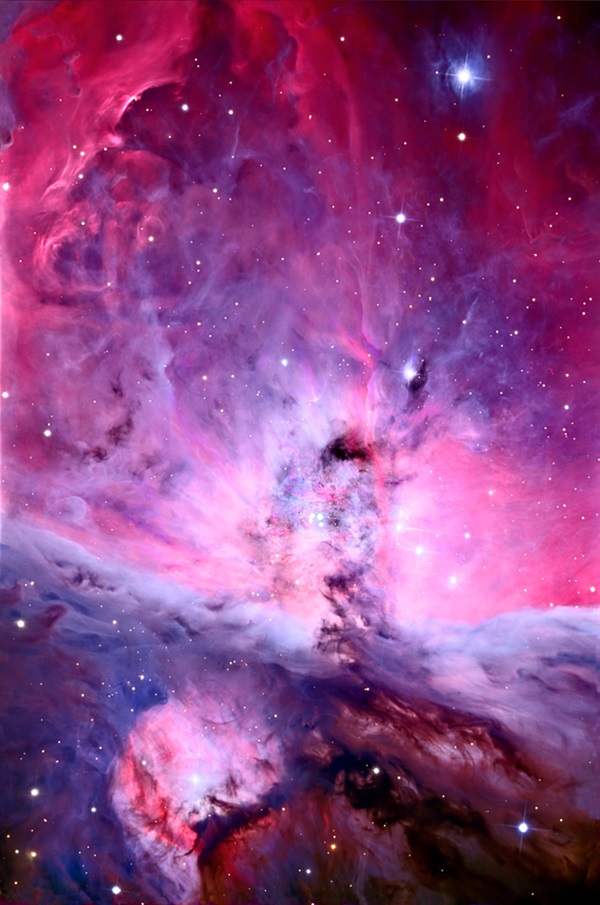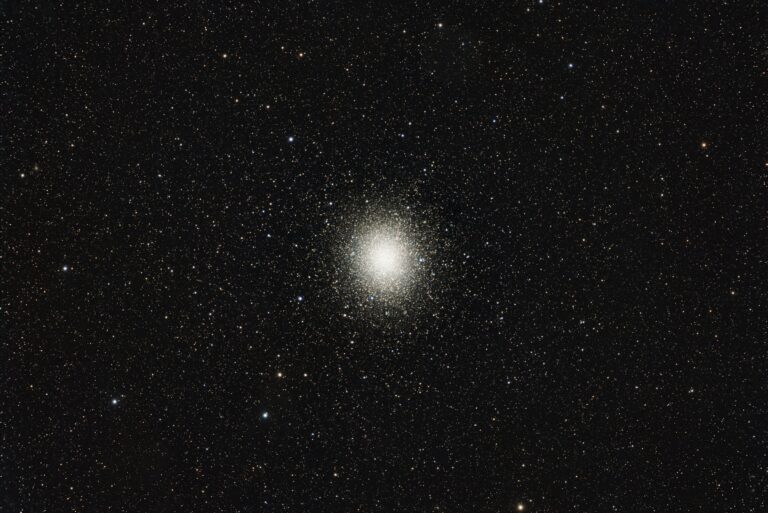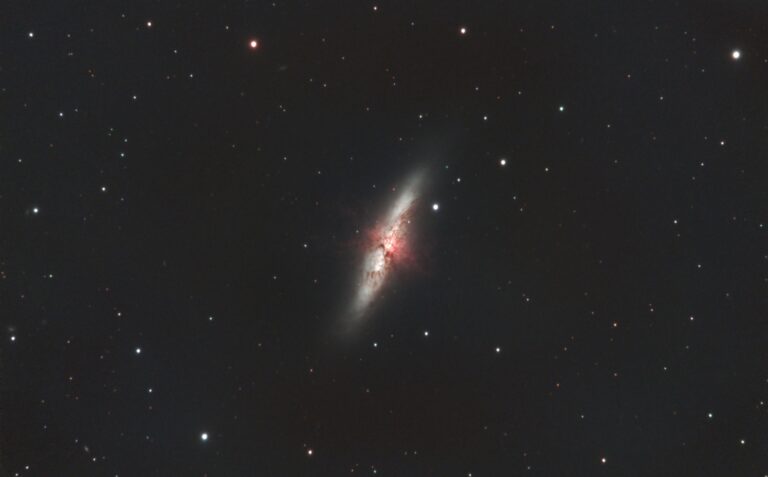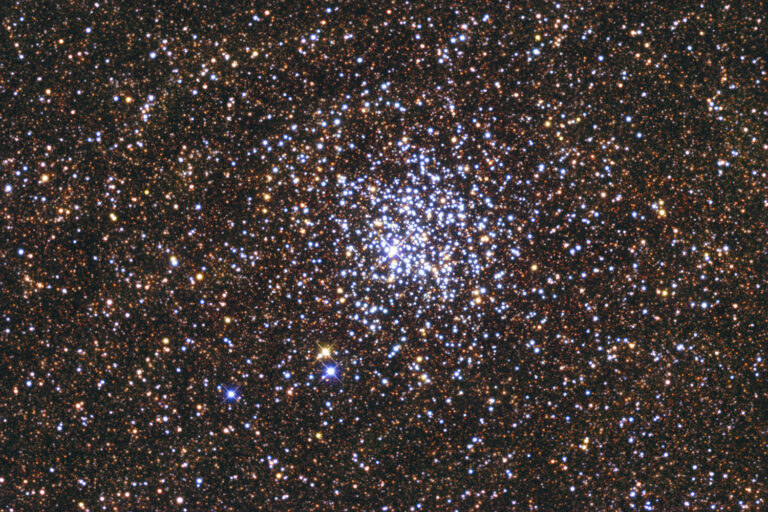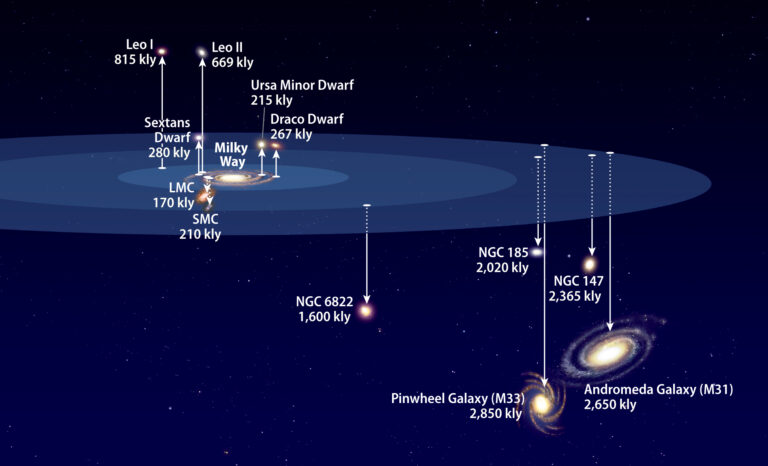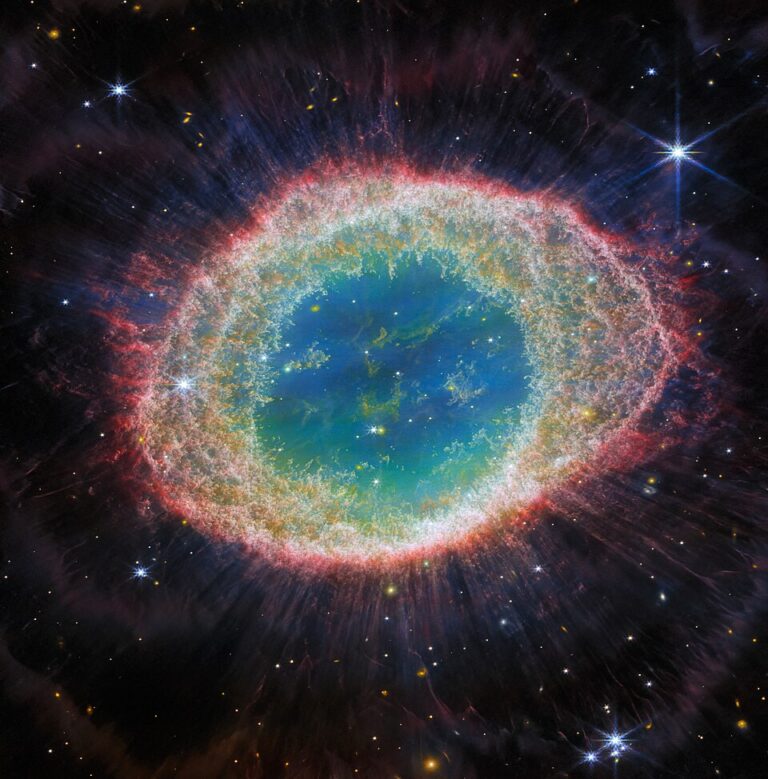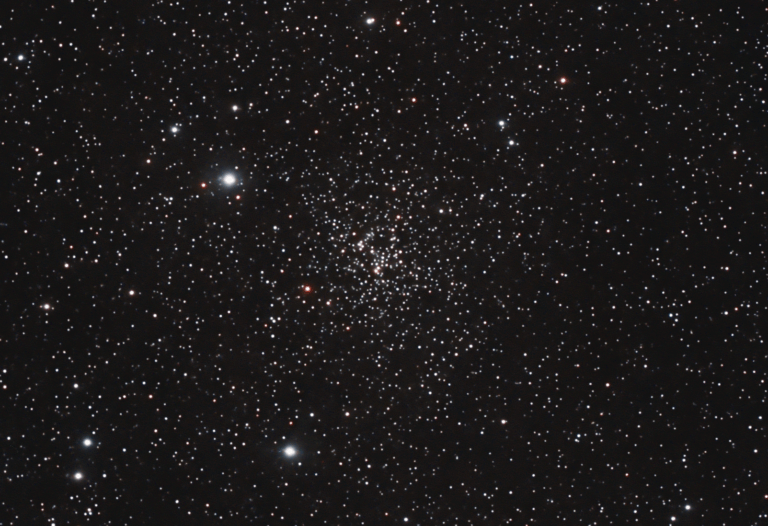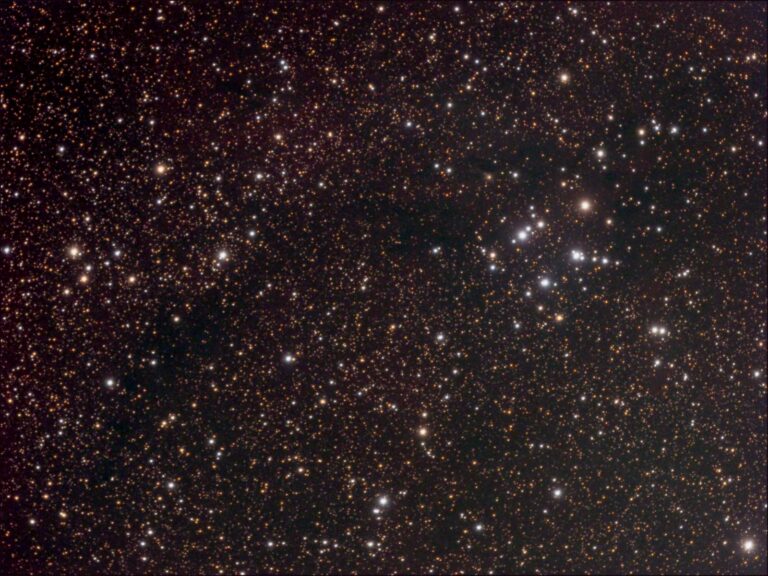Key Takeaways:
Of all the deep-sky objects visible from mid-northern latitudes, the Orion Nebula (M42) is by far the most spectacular. To the unaided eye, it faintly shines as the middle star in Orion’s Sword, dangling below the three iconic stars of the Hunter’s Belt. Johann Bayer christened it Theta (θ) Orionis in his Uranometria atlas of 1603. But neither he nor anyone else suspected its true nature before the invention of the telescope.
We now know that the Great Orion Nebula is a mammoth swath of ionized hydrogen gas and dust — also known as a Hydrogen II (HII) region — which makes it the sky’s best-known example of an emission nebula. You can think of it like a stellar incubator: Astronomers estimate at least 1,000 stars lie within it, veiled by opaque dust and only unlocked with infrared imagery.
The Orion Nebula is an amazing sight through all telescopes and binoculars. Even the smallest binoculars reveal it as a misty glow around Theta. But Theta isn’t really a single star; it’s instead a pair of stars, Theta1 and Theta2 Orionis, immersed in the cloud. Take a closer look and you will see that Theta1 is also not a single star but instead a family of four suns neatly gathered in a trapezoid pattern called the Trapezium. The stars are designated A, B, C, and D, ordered according to their location. The brightest of the bunch is magnitude 5.1 Theta1 C, which marks the trapezoid’s southern corner.
Telescopes expose some of the nebula’s amazingly intricate details. Its curved swirls reaching to the south are reminiscent of a cupped hand grasping outward. Theta1 Orionis also shines near a distinctive silhouette known as the Fish’s Mouth, which is formed by an area of dark nebulosity standing in front of a brighter region beyond.
Just north and slightly east of M42 is a second, much smaller tuft of nebulosity cataloged as M43. Despite their distinct designations, M43 is actually an extension of the Orion Nebula. It only appears separate because a stretch of dark nebulosity slices between the two.
Make sure to explore Astronomy’s full list of 101 cosmic objects you must see. New entries will be added each week throughout 2022.

